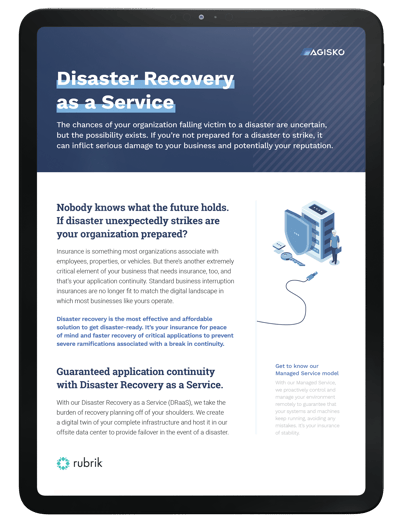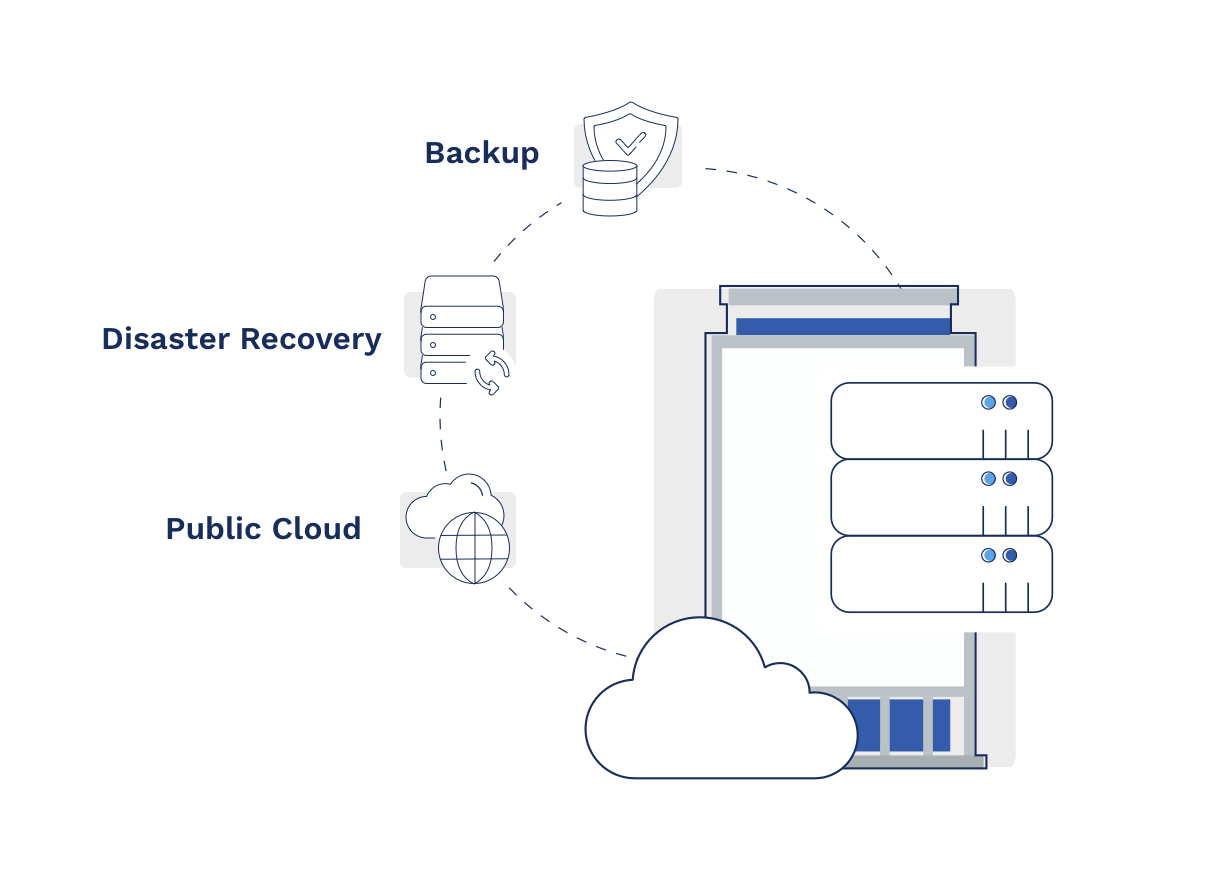
Close the door to data center vulnerabilities with a solid cloud, backup, and disaster recovery strategy for your modern data centers.

The first step to avoid unwelcome guests? Transform your data center infrastructure and network infrastructure. Let's help you!
Manage your on-premise and cloud infrastructures from ONE single location to ensure maximum resilience to cyber threats. It's about protecting your data and data center.
Bring together your private and public clouds. That means one place, one data center, to manage and recover your data if disaster strikes.
Automate thousands of backup jobs with SLA automation, replace expensive hardware with a cloud data center backup solution.
Become a tenant of the public cloud, combining software and servers into one platform. Let's advise you on the best public cloud provider.

Can you support business applications and guarantee continuity with your current data center design? Do you have the right security systems in place? We guarantee application continuity with our Disaster Recovery as a Service, one of our managed data center services.

Stop searching, we've collected the most frequent questions about data centers.
A data center is a specialized facility that houses essential elements like computing resources, storage systems, and networking equipment. These components, however, only scratch the surface of a modern data center's complexity.
Below the surface lies an intricate network of support infrastructure that's absolutely crucial to meet the tough demands of service agreements in big company data centers. These hidden heroes keep the digital show on the road, making them a must-have in any serious data center setup.
A data center is like a powerhouse full of supercharged computers, known as servers, all connected by a web of networks. These servers store, share, and access digital info. Just like your personal computer, servers have processors, storage, and memory, but they're much more powerful.
They work together seamlessly, ensuring your data is always available, secure, and quickly accessible, no matter where you are.
Generally, we can categorize data centers into four primary types:
These are owned and operated by the companies they serve. They're customized to a specific business's needs, whether it's a retail giant processing millions of transactions or a tech company storing vast amounts of data.
In this setup, a company still owns its data center, but the day-to-day management is outsourced to a third-party specialist. This model is perfect for companies wanting to focus on their core business without getting bogged down in IT maintenance.
Here, businesses rent space, usually a rack or a cabinet, within a larger data center facility. This gives them the benefits of top-tier infrastructure and connectivity without the colossal capital outlay.
Everything is outsourced to a cloud service provider. Businesses rent data storage, computing power, or software services on an on-demand, scalable basis. Companies like Amazon Web Services (AWS), Google Cloud, and Microsoft Azure are among the big data center providers.
Recap: Each of these data center types has its own advantages and best use cases. The choice of your data center depends on factors like budget, control, storage resources, scalability, and business needs.
Let's break it down below.
Traditional data centers were typically located on-premises as a physical infrastructure with physical servers and network hardware.
These data centers were largely characterized by siloed resources, and hardware utilization was often inefficient because each application had dedicated servers.
A modern data center primarily employs virtualization, pooling physical resources like servers and storage into flexible, shared virtual networks.
Automation plays a massive role in today's data centers, handling routine tasks, increasing operational efficiency, and minimizing manual intervention.
The rise of cloud computing has led to the development of cloud data centers, which offer on-demand access to computing resources.
These data centers are focused on sustainability and energy efficiency, and advanced cooling techniques are now commonplace to reduce the environmental impact of these data center facilities.
In summary, while traditional data centers served their purpose in the early stages of IT development, modern data centers have transformed to meet the demands of today's digital world, prioritizing efficiency, scalability, automation, and sustainability.
The differences between data centers and cloud computing often boil down to control, scalability, cost, and deployment.
In a traditional data center, organizations have direct control over their data and equipment; think hardware, software, updates, and security measures.
With cloud computing, much of that control is given over to the cloud service provider. You still retain control over your data and certain configurations.
Cloud computing is highly scalable. You can add or remove resources on-demand, making it a flexible solution for businesses with fluctuating needs.
Traditional data centers can also be scalable but generally require more time, money, and labor for scaling up or down.
Traditional data centers require significant upfront capital expenditure for equipment, real estate, and setup. The costs of running a data center include continuous energy consumption, maintenance, and upgrades. Cloud services operate on a pay-as-you-go model. You pay for what you use, converting many of those capital expenses into operational expenses.
Deploying a traditional data center can take months and requires significant planning and resources. In contrast, cloud resources can be deployed in minutes, providing businesses with a quicker, more efficient way to get applications and services up and running.
In summary, while traditional data centers offer more direct control, cloud computing provides greater scalability, flexibility, and cost-effectiveness.
The best choice depends on the specific needs and capabilities of your organization. Hybrid models that combine elements of both are also increasingly popular.



Learn more about Agisko